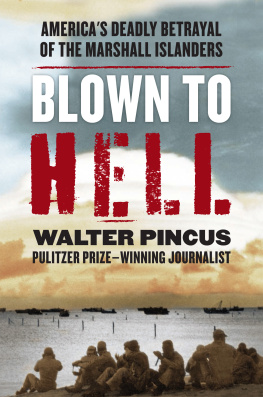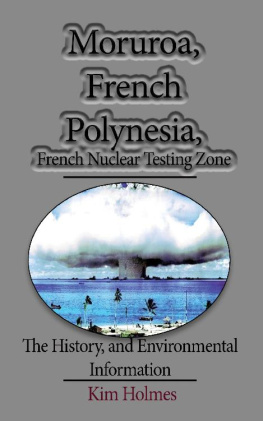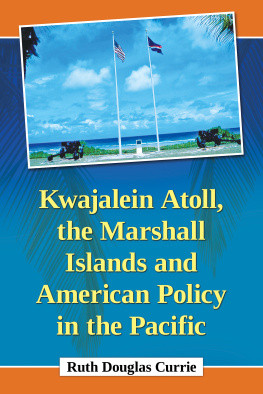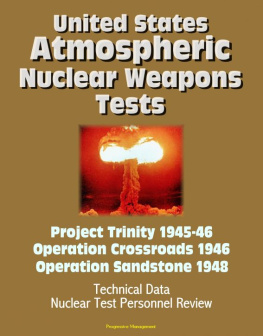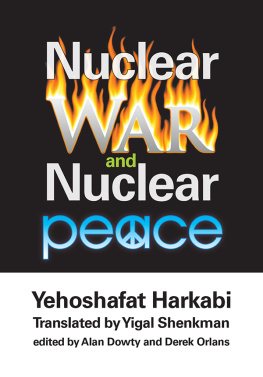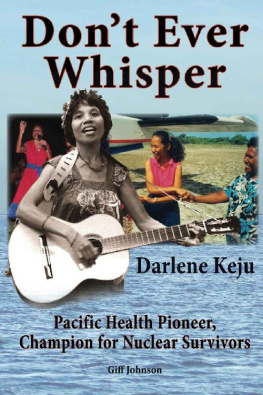
Contents


Copyright 2021 by Walter Pincus
All rights reserved, including the right to reproduce this book or portions thereof in any form whatsoever.
For more information, email
Diversion Books
A division of Diversion Publishing Corp.
www.diversionbooks.com
First Diversion Books edition, November 2021
Hardcover ISBN: 9781635768015
eBook ISBN: 9781635768022
Printed in The United States of America
1 3 5 7 9 10 8 6 4 2
Library of Congress cataloging-in-publication data is available on file
To Ann, who has been the inspiration for whatever good I have done, and to my children and grandchildren in hopes they never see nuclear weapons ever used.
CONTENTS
PROLOGUE
 Before dawn on March 1, 1954, John Anjain got up from his palm-mat bed and walked out of the plywood, thatched-roof house he shared with his wife and their five children on the Pacific Ocean atoll of Rongelap. At a clearing nearby, he began to lay out rows of coconut pieces; after a day baking in the sun these pieces would become copra , Rongelaps chief cash crop.
Before dawn on March 1, 1954, John Anjain got up from his palm-mat bed and walked out of the plywood, thatched-roof house he shared with his wife and their five children on the Pacific Ocean atoll of Rongelap. At a clearing nearby, he began to lay out rows of coconut pieces; after a day baking in the sun these pieces would become copra , Rongelaps chief cash crop.
Anjain, thirty-two, was a quiet, unassuming man, well-liked and respected as magistrate of the atoll. He was slight of stature, brown-skinned, square-faced with his black hair, already touched with gray, pushed back in a slight pompadour.
Only a few could have known that this innocent, humble father and his family, including his then one-year-old son Lekoj, would have their simple lives imperiled by deadly radioactive fallout from a hydrogen bomb test that morning some 120 miles away, detonated by American scientists and military personnel.

Rongelap is one of the twenty-nine atolls and five islands that make up the Marshall Islands, which lie 2,100 miles southwest of Hawaii and 2,400 miles east of Japan.
An atoll is a circular coral reef surrounding a lagoon; the Rongelap Atoll has 61 tiny islets forming a more square than circular chain around a 388-square-mile pristine blue-green lagoon. A smaller atoll, named Ailinginae, eight miles to the west, was generally uninhabited, but the Rongelap people often went there to gather crabs, fish, and turtle eggs.
The islands were originally settled two to three thousand years ago by people who sailed east from Southeast Asia. They first landed in Yap, an island west of the Philippines. Then some moved south to New Guinea, others east to the Solomon Islands, and finally northeast to the Marshalls.
After Spanish explorers in the sixteenth century visited Rongelap and nearby atolls, only whalers and traders passed through that part of the Pacific until missionaries arrived in the nineteenth century. Local chieftains controlled the atolls, with the current Kabua family line owning Rongelap going back to the 1860s. In 1885, Germany purchased the Marshall Islands from Spain and established a trading outpost, mainly for copra.
Japan, allied with Great Britain in World War I, won the Marshalls as its price for entering the fight. In the years that followed, Japanese companies developed the copra trade while Japans military developed Kwajalein Atoll as a military base. In January 1944, after months of fighting, American World War II forces took control of the Marshalls. When the war ended, the US maintained governance under the auspices of the United Nations as part of the Trust Territory of the Pacific Islands with an American high commissioner serving from within the Interior Departments Office of Insular Affairs.
The first American tests of atomic weapons in the Marshall Islands Operation Crossroadsbegan in 1946 in Bikini Atoll, 125 miles west of Rongelap . Tests then transferred to the US mainland, at the Nevada Test Site, before being moved back to the Marshalls because the new generation of thermonuclear bombs being developed had yields so large that officials feared radioactive fallout could not be safely contained at any site in the United States.

On March 1, 1954, eighty-two men, women, and children were living on Rongelap Islandthe largest island in that atoll, although only a half-mile wide and six miles long.
Next page
